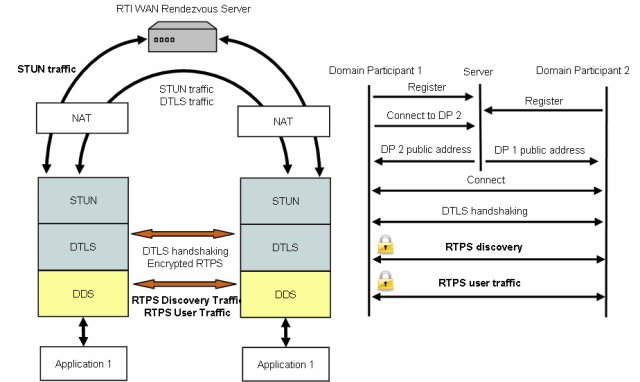WAN Traversal via UDP Hole-Punching
In order to resolve the problem of communication across NAT boundaries, the WAN Transport implements a UDP hole-punching solution for NAT traversal [draft-ietf-behave-p2p-state]. This solution uses a rendezvous server, which provides the ability to discover public addresses, and to register and lookup peer addresses based on a unique WAN ID. This server is based on the STUN (Session Traversal Utilities for NAT) protocol [draft-ietf-behave-rfc3489bis], with some extensions. This protocol is a part of the solution used for standards-based voice over IP applications; similar technology has be used by systems such as Skype and has proven to be highly reliable. A key advantage of STUN is that it is based on UDP and therefore is able to preserve the real-time characteristics of the DDS Interoperability Wire Protocol.
Once information about public addresses for the application and its peers has been obtained, and connections have been initiated, the server is no longer required to maintain communication with a peer. However, if communication fails, possibly due to changes in dynamically-allocated addresses, the server will be needed to reopen new public channels.
Figure 1 shows the RTI WAN transport architecture.
Figure 1 RTI WAN Transport Architecture

© 2015 RTI